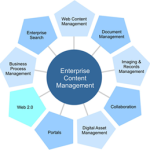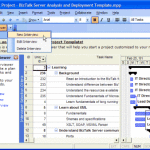The Changing Role of CIOs in organizations
There is something happening in the CIO world. The changes in roles & responsibilities that took supply chain managers, operations managers, and marketing managers by storm, have come to the shores of IT managers and CIOs. The old criteria of CIO performance used to be SLA  enforcement & server up-time. The same is not true anymore. Here on, CIOs’ and ITPMs’ performance will be measured from their strategic exploitation of IT, in addition to the operational efficiency of the IT function
enforcement & server up-time. The same is not true anymore. Here on, CIOs’ and ITPMs’ performance will be measured from their strategic exploitation of IT, in addition to the operational efficiency of the IT function
Who Says it is an Issue? According to a Bob Evans of Oracle, CIOs performance will no more be measured from their operational efficiency; operational efficiency is becoming only one metric of CIO’s performance
Industry examples: Forbes Top 10 CIO Issues indicate that the leading CIO’s such as Dan Drawbaugh of UPMC and Mike McNamara of Tesco have already shifted their focus from operational issues to the customer, from efficiency-driven job description to customer loyalty, and from controlling costs towards increasing the sales.
The way out: CIOs should free themselves up from the operational & integration issues. Instead, focus on the customers; understand their needs, frustrations and concerns. They may leave the laborious work of developing & integrating myriad apps to a qualified partner/s and get close to their end customer.
Here are the three ways in which CIOs and IT project managers can reinvent their roles and responsibilities.
COLLABORATE WITH INTERNAL FUNCTIONS & EXTERNAL PARTNERS
CIOs, along with their teams, can focus on collaborating with R&D and Product Development divisions to help fuel innovation through software-based solutions. It may require partnering with integration providers, however the partnership can yield results as partners help consolidate the sprawling and brittle IT assets.
RE-ENGINEER YOUR FOCUS
Technical hands, such as CIOs, CTOs, and project managers in the ICT industry have primarily been focused on managing the operational part of their IT estate.
The new opportunity lies in the strategic exploitation of your IT assets, and strategic initiatives are the ones that are close to customer concerns and woes.
Try spending your time in identifying front-edge sources of customer engagement and product/service innovation. Ultimately, CIOs will have to let go some operational work, manage it through in-house and out-house closely knitted teams, and focus on innovation and re-engineering of the IT function.
ONE PLUS ONE MAKES ELEVEN: PARTNERSHIPS EXCEL YOUR CORE OBJECTIVES
CIOs can delegate the integration & internal process tasks to internal IT teams and external EAI partners. Since, integration and development work requires full-time relevant expertise in things such as:
- Choosing the right IT framework for performing development work
- Choosing the right integration framework consistent with organization and function-level goals
- Short listing the development and integration teams and selecting the team lead
- Managing the application/system transition from one framework to another
- Developing and maintaining open-source as well as hub-and-spoke modeled IT integration solutions for existing workloads
- Managing the troubleshooting and error handling systems
Thus, the performance of these tasks solely by the CIO often consumes time, cost and energy that can be put to better use such as planning long term implications of choosing one framework over the other, identifying opportunities for system improvement and managing performance of the IT function.
KEY TAKEAWAYS
The change in CIO’s role and responsibilities is driven by a change in expectations that C-Suite executive and board members have of the CIOs. Technical and functional managers are now required to partner with in-house and out-house subject-matter experts to deliver greater value through the organization’s IT functions. CIOs and ITPMs should therefore collaborate with internal and external IT integration experts. It will allow CIOs to realign their focus to the company’s strategic objectives and cohort with development and integration partners to free-up for strategy making and innovation.


![[New Post] What are the 5 things that Internet of Things will trigger?](https://alliedc.com/wp-content/uploads/2015/03/IoT-150x150.png)




